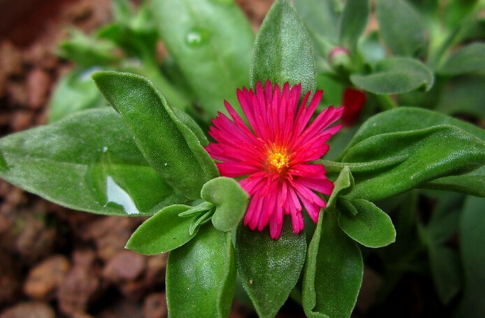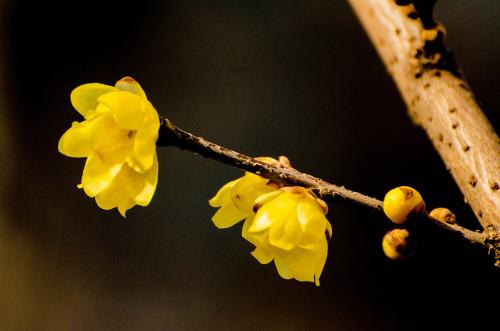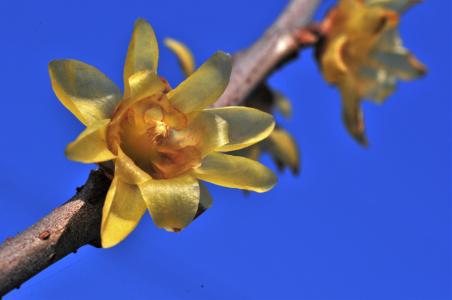Matters needing attention in culture of peony orchid after cuttage
1. Watering
After the success of peony orchid cutting, there will be a slow pot period, in these 10-15 days, the amount of water must be less, as long as a little water is poured after the soil is dry to keep moist. Until after the slow basin period, the watering returned to normal, once every 2 to 3 days in spring, once every 3 to 4 days in autumn, once every morning in summer and once every 7 days in winter, and stop watering during dormancy.

2. Lighting
Peony hanging orchid in the slow basin period does not need extra light, as long as maintain a cool and ventilated environment. It is not until the peony orchid passes through the slow basin period that the illuminance can be gradually increased. In summer, except for the appropriate amount of light from 8: 10 a.m. and 5: 8 p.m., it must be shaded at other times. It is best to shine indoors in spring and autumn, and all-day sunshine is best in winter.
3. Temperature
When cutting peony orchid, the temperature must be controlled between 18 and 22 ℃, not too high or too low, it will affect the survival rate of cutting, even after grudging cutting, it will lead to poor plant growth and sparse growth. The temperature of Paeonia suffruticosa is controlled above 10 ℃ in winter and below 35 ℃ in summer, otherwise the plant will be dormant.
Through the introduction of this article, I believe we already know how to cut peony orchid. As long as you strictly abide by the above steps, you will soon cut into living peony orchids.
What are the points for attention in cutting propagation of peony orchid? Is the peony orchid poisonous? Can I eat it?
Speaking of Cymbidium, I believe we are no stranger to it. Peony Cymbidium is a common variety of Cymbidium. She is often used for cutting propagation, and many flower friends have also had the experience of raising peony orchids. So, do you know what matters needing attention for cutting propagation of peony orchid? Is the peony orchid poisonous? Can I eat it? Let's get to know it with the editor.
Cutting propagation of peony orchid:
The reproduction of peony orchid is very simple, generally using cutting method, carried out in the Spring and Autumn period, very easy to survive. The specific operation is to intercept a mature branch, hang it for a while, then insert it into the prepared basin soil, put it in a cool and ventilated place, keep the soil slightly moist, and you can see the branch stand up after a few days, which shows that the new branch begins to take root.
There is no requirement for the soil, you can use whatever soil you have at home, insert the branches into the soil, then pour water thoroughly, put it in a cool place, and keep the soil moist in the later stage. Because peony orchids like water and light, they can bask in the sun after survival, and watering does not have to worry, as long as the basin soil does not accumulate water.
Is the peony orchid poisonous? Can I eat it?
Hanging orchid flowers have the function of improving the air, especially for indoor decoration to improve air quality and absorb toxins, so peony orchid is not toxic, and it is also good for indoor air purification and improvement.
The peony orchid is not only non-toxic, but also has many nutritional elements. Lutein, the antioxidant of the peony orchid, has a good health effect on all organs of the human body. It is very suitable for eating in spring, and lutein is also very good for the eyes. As a vegetable, peony orchid has a bitter taste but has obvious antipyretic effect.
This is all I know about peony hanging orchid today. I hope it will be helpful for flower friends to read this article. If you want to know more about peony hanging orchid, please continue to pay attention to the succulent flower bed, we will provide you with more related knowledge!
How to raise Peony Cymbidium Culture methods and matters needing attention
Although the peony orchid is a succulent variety with strong vitality, easy to raise and popular, it is far from enough to raise the peony orchid by stocking alone, so while mastering the growth habits of the peony orchid, it is necessary to learn the breeding skills of peony orchid.
How to raise peony orchid
1. Lighting control
Peony orchids are more sunny plants, want to bloom more, but also to give sufficient light, at least more than 6 hours of light every day, the most suitable for growing in the south or west windowsill, winter can be seen through the windowsill. (proper shade is needed in summer)
2. Pay attention to watering
The peony hanging orchid likes the warm and moist environment, the water demand is also quite high, of course, it is necessary to reduce watering appropriately in winter. Keep the basin soil moist in summer, as long as the basin soil does not accumulate water.
After cooling in autumn, we began to reduce the watering frequency and keep the soil slightly dry. If your peony orchid leaves are particularly luxuriant, but there are no flowers, it is necessary to properly control the water, let the pot soil dry for a while, in order to give birth to buds.
3. Skills of fertilization
Peony hanging orchid likes thin fertilizer, thin fertilizer can make the plant more robust, combined with proper pinching, can make it grow luxuriantly, more conducive to the gestation of buds.
Generally more fertilizer is applied in spring and autumn, but not in winter. Thin fertilizer can be given twice a month in spring and autumn. Ordinary compound fertilizer or rotten cake fertilizer is OK. If you want to blossom more easily, you can water potassium dihydrogen phosphate once a month to promote the gestation of more buds.
4. Overwintering maintenance
Winter maintenance of course to pay attention to cold, reduce the frequency of watering, you can cut off some cross branches, used for cutting reproduction, pay attention to maintain a certain indoor air humidity, the temperature to maintain more than 5 degrees. Proper pruning can be carried out to cut off some branches that are too long or too dense to conserve nutrients so that they can blossom more in the coming year.
5. Soil and basin change
Peony hanging orchid likes loose humus soil, choose the mixture of rotten leaf soil, garden soil and river sand, or directly use peat soil with perlite, its root system is fleshy, so drainage must be guaranteed.
Potted peony orchids are usually changed once every two years. When changing pots, the withered and old roots can be cut off properly. After putting them on the pot, they can be maintained in the shade for two weeks and see the light slowly.
Matters needing attention in the culture of peony orchid
Peony orchids are easier to raise and popular because, in general, there are no diseases and insect pests. Sometimes root rot occurs, and the inducing factor is probably due to stagnant water in the basin.
How do the leaves of peony hanging orchid turn yellow?
1. Natural metabolism
If the peony orchid is raised for a long time, the leaves at the bottom will naturally wither and yellow. this is a very normal phenomenon. Flower friends need not worry, even if there are a lot of withered and yellow leaves at the bottom, it does not matter, as long as the top leaves are normal.
2. strong sun, or no light for a long time.
If the peony orchid is exposed to the sun, the leaves will be yellow. If it is maintained without light for a long time, the chlorophyll will be reduced and the leaves will turn yellow.
3. Lack of fertilizer or excessive fertilization
Some flower friends' peony orchids have been raised for a long time, but they have not turned the pot to change the soil for a long time, the various nutrients contained in the basin soil have been exhausted, the three elements of nitrogen, phosphorus and potassium have not been replenished in time, the plants are lack of nutrients, and the leaves are yellow and thin. At this time, fertile loam and fertile water should be replaced in time.
Excessive fertilization is easier to judge, mainly depends on whether the fertilizer has been applied recently, if the fertilizer exceeds the requirement of the plant, there will be uneven leaves, rotten roots, yellow leaves, should stop fertilization, irrigate more water, or turn the basin to clean the roots. replace the new soil.
4. Stagnant water
Some flower friends' peony hanging orchid pot soil has poor air permeability and frequent watering, which leads to long-term stagnant water in the basin soil, difficulty in root respiration, and yellowing of leaves, so it is necessary to loosen the soil and control moisture in time.
The function of Peony Cymbidium
The main function of peony orchid is to watch. The peony orchid can be used as a potted plant or hanging basin to decorate the interior. In the application of garden, peony orchid can be used as the layout of desert landscape.
The peony hanging orchid also has the edible function, can carry on the cold salad.
When raising peony orchids, there may be phenomena such as yellowing leaves and losing leaves, so there is no need to be in a hurry. We only need to compare the normal growth needs of peony orchids to find out where the problem lies. Then take some targeted measures to solve the problem smoothly.
- Prev

The mode of reproduction of Lamei
The main results are as follows: 1. The propagation mode of grafted Lamei is generally based on grafting, mainly by cutting. Select the developed branches from the mother plant, then cut off the top tip, then use the rootstock and scion to complete the grafting, and finally wait for the preserved plum to take root.
- Next

Culture methods and matters needing attention of Prunus mume
1. Lamei likes the sun, so it should be placed in a bright place during the growing period, but be careful not to be exposed to the sun in summer. 2. Watering dried plum is not resistant to water and moisture, so watering should be careful not to have stagnant water, so that it can grow healthily, otherwise it may wither.
Related
- Fuxing push coffee new agricultural production and marketing class: lack of small-scale processing plants
- Jujube rice field leisure farm deep ploughing Yilan for five years to create a space for organic food and play
- Nongyu Farm-A trial of organic papaya for brave women with advanced technology
- Four points for attention in the prevention and control of diseases and insect pests of edible fungi
- How to add nutrient solution to Edible Fungi
- Is there any good way to control edible fungus mites?
- Open Inoculation Technology of Edible Fungi
- Is there any clever way to use fertilizer for edible fungus in winter?
- What agents are used to kill the pathogens of edible fungi in the mushroom shed?
- Rapid drying of Edible Fungi

